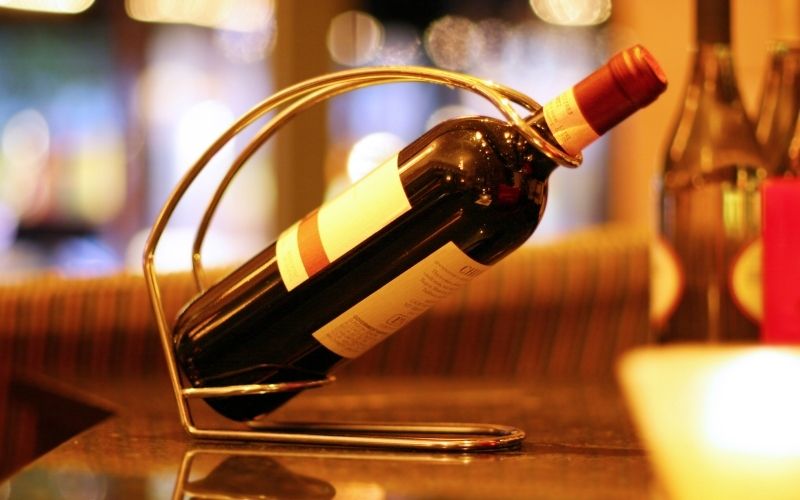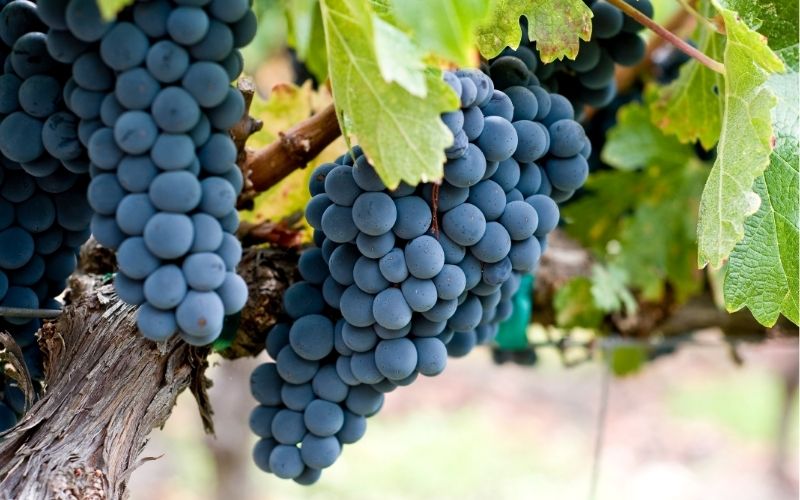
Cheap Wine Vs. Expensive Wine: Which Is The Better Deal?


Many people have a preconceived notion that expensive wine is better than affordable wine. This couldn't be farther from the truth because cheap wines can offer just as much enjoyment and flavor as an expensive bottle of wine.
However, many factors may affect wine and its price point. In this blog, we'll determine which type of wine has the edge in each category. Between cheap vs. expensive wine, which do you think is worth your money?
| Cheap Wine | Expensive Wine |
| Large production | Small production |
| Usually aged in American oak barrels | Typically aged in French oak barrels |
| Less aging time | More aging time |
| Mostly a blend of grape varieties | Single-varietal grapes |
| General region or location | Specific region or location |
| Machine-harvested | Harvested by hand |
| Average-quality packaging | High-quality packaging |

Cheap wines are a simple, easy-drinking alternative to pricier bottles. They're made from grapes harvested by machines in flat terrain vineyards and can be adjusted with stabilizers or sweeteners during production phases.
When winemakers want an added flavor of oakiness without the expense of using authentic barrels, they'll add chips or staves for that woodsy taste instead!

It's no wonder that the process of producing a costly wine is much more time-consuming and has more attention to detail. From handpicking grapes in vineyards to aging them for several years, wines are carefully crafted with a feeling of care built into every step along the way.
Ultimately, it makes sense why high-end red wines have higher levels of tannins which help develop complex flavor profiles. Premium white wines benefit from their increased acidity resulting in concentrated flavors allowing these bottles to age up to 10 years! These wines are what wine connoisseurs like to explore during a wine tasting.
Like the grapes grown to produce wine, there is also significant variability in what makes up its price. The location where they are planted plays an important role and how well-known their appellation is, such as in famous French wine regions.
Expensive wines are made in the vineyard, and you need to focus on limiting yields for great grapes. This might not seem logical at first glance because if winemakers want less grape juice, they would have more of each type of fruit, giving them access to a greater variety and intensity level. However, the best vines grow where there is a struggle, such as hills with low-nutrient soil or near rivers providing fertile ground.
The bulk of cheap wines are made from grapes grown in hot regions with fertile soils, like California Central Valley. These environments grow grape crops easily and quickly, but they lack the subtleties from different climates such as Europe or Napa Valley. As a result, wine producers have to settle for lower prices because the land is much cheaper than elsewhere due to this climate-related tradeoff.
Wine enthusiasts often spend a lot of money on pricey wines that could give them the best drinking experience. The reason is they want to taste wines from small, high-quality vineyards and not large quantities with low-quality grapes.

Pretty much the grape varieties used for both cheap and high-end wines are the same. They can be your usual ones like Cabernet Sauvignon, Chardonnay, Merlot, Sauvignon Blanc, and more. Cheap and expensive wines can also be single-varietals (using only one grape variety) or wine blends (using a combination of grape varieties).
One distinguishing factor they have, though, is whether the grapes are high yielding or low yielding. Usually, cheap wines are made of grapes that are grown rapidly and in massive amounts.
With this in mind, you might think that high-priced ones are made using low-yielding grapes. While this is true, it's not always the case. Some pricey wines can also be produced using high-yielding grapes.
The grape quality is more dependent on the vineyard’s location where the grapes are grown and its climate and soil condition. It also depends on how the grapes are cultivated. It's also worth mentioning that much of the end product's quality depends on more than just the fruit.
In other words, even if the grapes are of excellent quality, but the process of turning them into wine is not as proficient, then you'll still end up with a bad batch. So for this round, it's a tie on both wines!

To make expensive red wines, winemakers will often conduct post-fermentation maceration. After it has been fermented and separated from grape skins, it is left in contact with the remaining skins for a time so the tannins can be extracted.
This process takes place at the end of production when alcohol levels are high. It's believed that this post-fermentation maceration helps smooth out astringent qualities found within some wines by adding softness and subtlety while still retaining structure.
On the other hand, affordable wines tend to contain additives to make up for the grapes' quality or less time used. This will supposedly make a more balanced amount of tannins, alcohol, and acidity. Some might say that it's not an all-natural process.
Although a post-fermentation maceration takes a long time to complete, it does wonders for the overall result of the wine, giving you a smooth wine experience. For that reason, the expensive wine wins this round.

Wine connoisseurs and oenophiles have always prized oak-aged wines. Oak adds complex flavors to wine like vanilla, baking spice, or a woodsy aroma reminiscent of whiskey barrels with bourbon aging inside them.
The porous nature of oak allows oxygen into the barrel, which does some fantastic things for wine! The tannins become less intense while other notes in flavor emerge, and aeration helps develop new textures on your palate.
High-end wines are aged in French oak to give them a specific flavor and silkier tannins. A great example of a pricey wine made with this type of wood is Cros Parantoux by Henri Jayer, which was instrumental in transforming the quality and reputation of Burgundian wine. This $17,000 bottle of wine from Bourgogne features 100% new oak-aged wine - giving it a rich taste that will delight any connoisseur!
The use of American oak barrels has been traditionally thought to be the hallmark of inexpensive wines, which also yield excellent results. They impart big flavors of vanilla, coconut, and spice. Cheap yet still sophisticated wine brands like Silver Oak prove that it's possible to make a good quality product without using costly French oak barrel aging processes.
The French oak is often less dense, but it also comes with a hefty price tag. Meanwhile, the average cost of the American oak is about $500, depending on where you are purchasing your barrels and how many you need. A winery may reduce its financial burden by opting for an affordable option with excellent flexibility and sturdiness.

It’s said that the older a wine gets, the better it tastes. This is especially true for red wines. But what does time really add to certain wines? Time changes flavors in fruits and reduces acidity as well as tannin levels of different types of drink.
Winemakers that produce fine wines have a specific goal of developing complex aromas and flavors. The acidity level of grapes grown on hillsides and mountains creates more complex wines and a longer shelf-life. The higher the acid, the better it is for long aging because these types of wine develop more enjoyable aromas as they age over time than those that do not have such high levels of acids.
Cheap wines are meant to be consumed quickly. This is primarily due to their shelf life and not being designed for aging like a more expensive bottle of wine. A fresh bottle will have a bright, fruity taste which can disappear with age as flavors fade and the wine becomes dull.
Aging a wine has many benefits. You can let it sit in your cellar without worry or fear of spoilage, as the alcohol content reduces and complex flavors come out with age, like dried and stewed fruits and stewed fruits. This is why it's worth waiting many years before the wine is consumed.
The residual sugar in wine is a much-desired ingredient for many connoisseurs. This sweetness can come from the natural sugars found on grapes and other sources like corn syrup or granulated white sugar. In some cases, not all of this sweet goodness gets consumed by yeast during fermentation.
Nowadays, winemakers can use their expertise to create dry wines with a delicious aroma. The sugar level is controlled in pricey wine production so that the grapes are sweet without any added processed sugars.
These fruits provide balance for acidity levels between their sweetness and tartness. They give off just the right amount of flavor rather than being overly acidic like some other varieties! Other expensive choices are usually dry rather than sweet to give different complex flavors.
Sugar is often added to wine to make it more appealing and less sour. Grapes that have not ripened enough can be too acidic, so the wine producers will sometimes add sugar or syrup into their product as a way of balancing out this tart taste.
The addition of sweeteners, such as RCGM (rectified concentrated grape must), to cheap wines helps wine producers compete at a lower cost by attracting more customers who prefer sweeter drinks.
The natural sweetness is a better and possibly a healthier choice than artificial or added sugar. This way, you are assured no other chemicals were used in the wine to make it sweet and not bitter.
What does a person care about when ordering wine? For most people, the only thing they are concerned with is whether it tastes good, while others prefer wines with flavors that they can appreciate immediately. Affordable wines tend to have a simple taste but are still good.
On the other hand, high-end wines are usually what wine connoisseurs look forward to because they want to experience new complexities and nuances that may not be present in their cheaper counterparts. Those that don't have trained palates may also find it difficult to appreciate these characteristics at first because they're still inexperienced in wine drinking and tastings.
Tastes differ widely between individuals, so what suits some may be considered mediocre by other palates, while others would deem the same beverage exquisite regardless of its price tag.
From the earliest days of viticulture, wine regions have been defined by their geography and regional hierarchy. The higher an appellation is in a region's classification system, the more costly that area’s wines are likely to be because they're from vines planted on some of its most revered land with centuries-old traditions.
For instance, the Rhône’s Hermitage AOC wines are prized for their high quality and rich flavors. They have a reputation surpassing even those in Crozes-Hermitage, often priced at less than £20 per bottle. This coincides with the general opinion of wine experts who believe there's usually a correlation between price, taste, and heritage, depending on where it was made.
You may think that you are getting a better wine from the more famous region, but this is not always true. Sometimes wines from the lesser-known areas can be just as good if not better than those regions with longstanding reputations for quality and prestige.
Before the aging can begin, grapes need to be picked from their vines and stored in coolers with limited light so they won’t spoil or rot.
Some people would argue that machine-harvesting is better than hand-picking because machines are more efficient than humans. However, some of this equipment cannot check the quality as well as human pickers.
The grape harvest is a time-honored tradition for winemakers. While mechanical harvesters are more efficient and cost-effective, some producers have decided to use the traditional hand method of harvesting grapes instead because it has become part of their brand identity.
They also want as close to an organic wine production process as possible. Grapes used in high-priced wine are, most of the time, hand-picked.
Mechanical harvesters have revolutionized the grape production process, and high-volume vineyards need to use them. The machine goes over the vines shaking bunches of grapes until they drop into a container; it can work around the clock at 200 tonnes per day! The grapes from this method are used to make cheaper wines.
In picking grapes, harvesting by machine is more efficient. This method saves time and money compared with hand pickers, who have an even more lengthy and costly process.

Wine is most commonly contained in glass bottles, but some innovative winemakers use alternative ways to create cheaper packaging, such as plastic bottles and boxes.
Some mass-produced wines are packed in plastic bottles to be cheaper and more efficient. You might have also heard of boxed wines in a plastic container that dispenses the drink. This type of system is apparent in wine dispensers.
While it is cheaper, plastic containers might not be a good place for wine in the long run. For instance, the chemicals in the material can affect the wine, and it also doesn't give the wine a chance to age in the plastic bottle, as opposed to glass bottles.
On the other hand, higher-end wines tend to have better quality glass bottles that are tinted and thick to prevent sunlight from damaging the wine.
Wines can either be enclosed with a screw cap or a cork (natural or synthetic). It's common to think that those that have corks, especially natural ones, are more expensive, but this is not entirely true because some expensive bottles also use screw caps.
The type of seal to use also depends on the kind of wine. Some wines benefit from the air that seeps through corks, while others need to have no contact with oxygen while in the bottle.
Since low-priced wines come in different types of packaging, with some of them not beneficial to wine, this round goes to expensive wine. Most often than not, you're going to get a quality bottle with a proper closure when you buy a high-end wine. These glass bottles also won't rush you in finishing the drink.
Based on the factors above, expensive wines have the edge. However, this doesn't mean that they are always better. Higher-end wines may sound more appealing and have more sophisticated processes, but they're not always accessible, especially for those who want good value.
As for the winemakers' side, they also have to choose between efficiency and quality. Whether they want the least costly and fast or the delicate and slow but sure method, one can't say that there is a right way because it depends on their resources and methodologies.
What matters at the end of the day is when you enjoy the wine. You can decide whether a particular drink is worth your money or not. Taste is subjective, and so is the preference between cheap vs. expensive wine.

